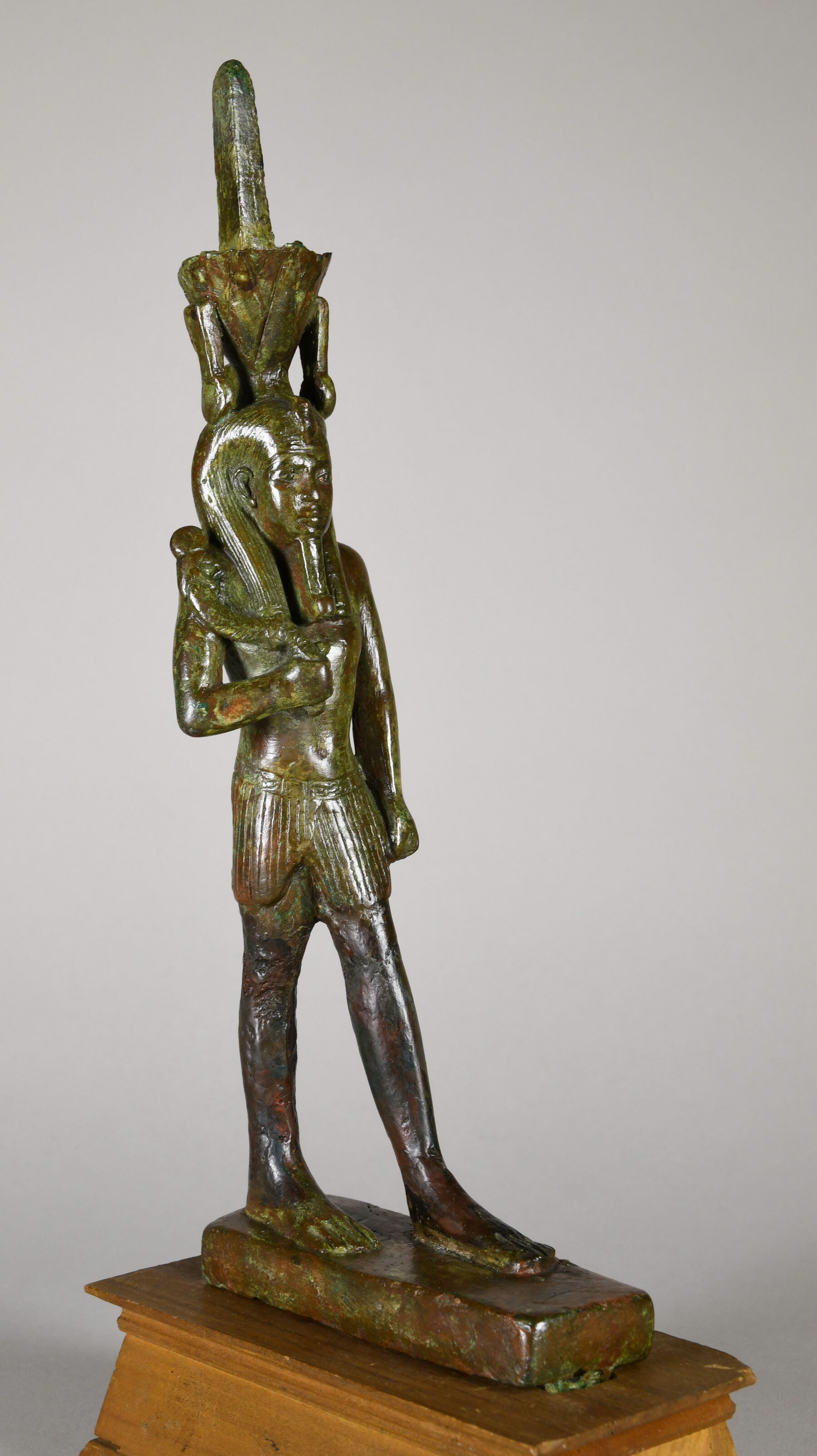In the ancient Egyptian creation myth, the sun rose from a lotus blossom on the mound of creation, which associated the god Nefertum with the newborn sun. When Ptah became a chief state god, Nefertum was seen as the son of Ptah and the lioness goddess Sekhmet.1 In the Late Period, statuettes of Nefertum were deposited in temples and shrines at Memphis and Bubastis.2
The god Nefertum is distinguished by his lotus blossom headdress from which two plumes emerge. Menat counterweights (fertility symbols) rest on either side of the lotus. The striding god wears a tripartite wig with a uraeus, a divine curled beard, and a shendyt-kilt. He holds a scimitar with a papyrus-form grip surmounted by the head of the solar falcon wearing a wig and the sun disk.3
MH
-
Wilkinson, Richard H. 2003. The Complete Gods and Goddesses of Ancient Egypt. Cairo: The American University in Cairo Press.. ↩︎
-
Hayes, William C. 1938. “The Egyptian God of the Lotus: A Bronze Statuette.” The Metropolitan Museum of Art Bulletin, Vol. 33, no. 8: 182-184.. ↩︎
-
Similar bronzes in Weiss, Katja. 2012. Ägyptische Tier- und Götterbronzen aus Unterägypten: Untersuchungen zu Typus, Ikonographie und Funktion sowie der Bedeutung innerhalb der Kulturkontakte zu Griechenland. Ägypten und Altes Testament 81. Wiesbaden: Harrassowitz Verlag.. ↩︎
Bibliography
- Hayes 1938
- Hayes, William C. 1938. “The Egyptian God of the Lotus: A Bronze Statuette.” The Metropolitan Museum of Art Bulletin, Vol. 33, no. 8: 182-184.
- Weiss 2012
- Weiss, Katja. 2012. Ägyptische Tier- und Götterbronzen aus Unterägypten: Untersuchungen zu Typus, Ikonographie und Funktion sowie der Bedeutung innerhalb der Kulturkontakte zu Griechenland. Ägypten und Altes Testament 81. Wiesbaden: Harrassowitz Verlag.
- Wilkinson 2003
- Wilkinson, Richard H. 2003. The Complete Gods and Goddesses of Ancient Egypt. Cairo: The American University in Cairo Press.
